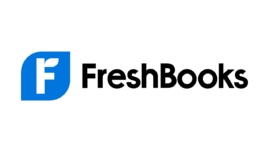See how the HPE edge-to-cloud platform and Microsoft managed device each solve different edge computing challenges.

As enterprise computing product and services companies scramble to meet the diverse needs of large companies, vendors tend to add capabilities that extend their core strengths. HPE historically has been a hardware technology innovator that has evolved over the years to offer a wide range of products and services intended for enterprise environments. Whereas, Microsoft historically has been a business software system stalwart. With the Azure platform, the company seeks to extend that legacy leadership into cloud and edge computing environments.
Cloud computing leverages massive data centers full of devices connected to high-speed networks in order to handle compute workload and storage. Importantly, many of the hardware details are abstracted away. Edge computing seeks to package much of this power into various smaller, more portable devices that can work in conjunction with cloud systems, but without necessarily needing an always-on link to a central system.
HPE GreenLake and Azure Stack Edge represent different pieces of the overall edge-cloud computing solution. As a hardware device, Azure Stack Edge complements Microsoft’s legacy software strengths. As an edge-to-cloud platform, GreenLake complements HPE’s historic hardware strengths.
SEE: Don’t curb your enthusiasm: Trends and challenges in edge computing (TechRepublic)
Jump to:
What is HPE GreenLake?

HPE GreenLake offers an edge-to-cloud platform intended to allow enterprises to run cloud services in a wide range of settings: On-premises, at the edge, in a colocation site and in the public cloud.
The company offers solutions intended to meet needs for customers that desire solutions for a range of cloud and hybrid workloads, such as HPE GreenLake for Anthos for customers that prefer Google’s platform; HPE GreenLake for Microsoft Azure Stack Hub; and HPE GreenLake for Microsoft Azure Stack HCI for customers that work in a range of Microsoft Azure on-premises, hybrid or cloud scenarios.
What is Azure Stack Edge?

Microsoft’s Azure Stack Edge describes a range of Azure managed devices that work with other Azure products but allows an organization to run apps and data locally. The Azure Stack Edge Series devices let an enterprise deploy compute and storage at the edge, rather than in a data center or public cloud. The company refers to the device as “hardware as a service” that places processing power where you need it to run machine learning models, for example, then transfer data to Azure as appropriate.
HPE GreenLake vs. Azure Stack Edge: Feature comparison
The range of HPE GreenLake capabilities might best be covered with a visit to the HPE GreenLake Marketplace. Beyond standard cloud integrations with AWS, Microsoft and Google systems, HPE GreenLake offers more than 70 services, which include artificial intelligence and machine learning (AI/ML) capabilities, databases, security, storage, analytics, monitoring, virtual machines, and more.
With HPE GreenLake, the idea is that your various workloads and data pools blend together for a unified solution. A set of related offerings, named HPE Ezmeral, helps enterprises build and deploy AI and analytics workloads.
Microsoft offers Azure Stack Edge devices in various form factors for different deployment environments that include:
- Pro, a 1U (single-rack unit size) appliance intended for data center or branch locations;
- Pro 2, a compact form factor for edge or branch locations;
- Pro R for ruggedized deployments in remote locations; and
- Mini R for battery-operation in harsh environments, which is small enough to fit in a backpack.
The intention is that you may run compute workloads not only with Azure in Microsoft’s data centers, but also on an Azure Stack Edge device that you deploy in your own data center, branch location or any harsh remote environment.
HPE GreenLake vs. Azure Stack Edge: Which should you choose?
HPE GreenLake and Azure Stack Edge solve different problems, so a choice between the two would likely be relatively straightforward—as long as you know exactly what problem you seek to solve.
An Azure Stack Edge device would undoubtedly make the most sense for any organization that has significantly invested in the Microsoft and Azure ecosystems. If your organization has centered your cloud computing capabilities on Azure, an Azure Stack Edge device would be the logical choice when you need to deploy cloud capabilities in an edge environment.
HPE GreenLake will make the most sense for an organization that seeks to move toward an overall edge, hybrid or cloud-as-a-service subscription model. Thanks to HPE’s wide range of equipment and capabilities, you essentially configure what you need and pay for what you use. The specific solutions can be configured and deployed where your organization needs them, whether that be in a data center or a remote location.
It’s interesting to see how changing computing demands nudge companies out of their comfort zone. Demand for edge and cloud solutions results in things such as Microsoft offering hardware—although highly linked to their software platform—and HPE using software to offer hardware-as-a-service. Ultimately, both will likely benefit enterprise customers who seek to leverage the capabilities of cloud systems in edge environments.
Source of Article



